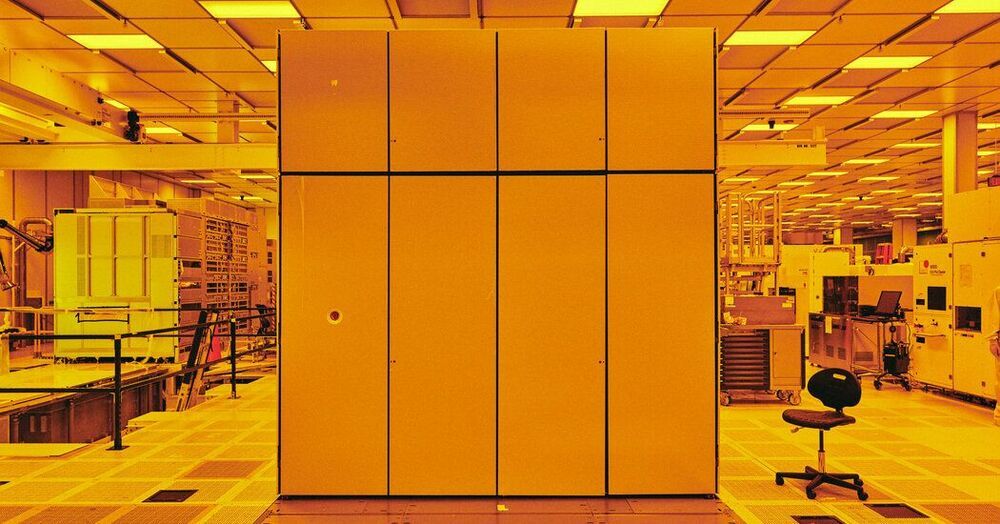Black holes seem like the perfect spot for harvesting energy.
Researchers create a device to test a 50-year-old physics theory from the famed Roger Penrose.
Black holes seem like the perfect spot for harvesting energy.
Researchers create a device to test a 50-year-old physics theory from the famed Roger Penrose.
The 2021 Space Renaissance Congress Acta is now online, and the voting session for the new President and Board of Directors is now open.
Dear SRI friends and supporters.
Two key milestones of our 3rd World Congress are now accomplished.
**1) The complete acta of the presented papers and speeches** is now online, for all of us to be viewed and reviewed. https://2021.spacerenaissance.space/index.php/2021-space-ren…ress-acta/
On this page you can find: * The presented papers, for download * The pointer to each live presentation, in the recorded videos on YouTube (hyperlink-pointer to the hour: minutes: seconds)
When watching to any video on the YouTube Space Renaissance channel, don’t forget to subscribe to the channel! (the channel is relatively recent, and increasing the number of subscribers is key to our web reputation).


What the FENCE program hopes to do is to create event-based cameras that are more intelligent thanks to the use of brain-mimicking or neuromorphic circuits. What these do is to drastically reduce the amount of data that needs to be handled by disregarding irrelevant parts of the image. Instead of dealing with an entire scene, the event-based camera focuses only on the pixels that have changed.
DARPA has announced the start of the Fast Event-based Neuromorphic Camera and Electronics (FENCE) program, which is designed to make computer vision cameras more efficient by mimicking how the human brain processes information. Three teams of scientists led by Raytheon, BAE Systems, and Northrop Grumman, are tasked with developing an infrared (IR) camera system that needs to process less data, operates faster, and uses less power.
Modern imaging cameras are growing increasingly sophisticated, but they are also becoming victims of their own success. While state-of-the-art cameras can capture high-resolution images and track objects with great precision, they do so by processing large amounts of data, which takes time and power.
According to DARPA, this is fine when the task is something like tracking an airplane in a clear blue sky, but if the background becomes cluttered or starts to change, as is often the case in military operations, these cameras can soon be overwhelmed.

NASA and its commercial and international partners are building Gateway to support science investigations and enable surface landings at the moon, the agency said in a statement.
Northrop Grumman will be responsible for attaching and testing the integrated quarters with a solar propulsion module being developed.
Eight countries have signed an international pact for moon exploration as a part of NASA’s Artemis program as the U.S. space agency tries to shape standards for building long-term settlements on the lunar surface.

“Deep in the forests of Germany, nestled neatly into the hollowed-out shells of acorns, live a smattering of ants who have stumbled upon a fountain of youth. They are born workers, but do not do much work. Their days are spent lollygagging about the nest, where their siblings shower them with gifts of food. They seem to elude the ravages of old age, retaining a durably adolescent physique, their outer shells soft and their hue distinctively tawny. Their scent, too, seems to shift, wafting out an alluring perfume that endears them to others. While their sisters, who have nearly identical genomes, perish within months of being born, these death-defying insects live on for years and years and years,” Katherine J. Wu writes.
A parasite gives its hosts the appearance of youth, and an unmatched social power in the colony.

Among the three billionaires throwing money behind their own rockets in a race to space, Richard Branson may be the first to take flight after his company Virgin Galactic received approval from the U.S. aviation safety regulator to fly people to space.
Watch The National live on YouTube Sunday-Friday at 9 p.m. ET
Connect with The National online:
Facebook | https://www.facebook.com/thenational.
Twitter | https://twitter.com/CBCTheNational.
Instagram | https://www.instagram.com/cbcthenational.
More from CBC News | https://www.cbc.ca/news.
The National is CBC’s flagship nightly news program, featuring the day’s top stories with in-depth and original journalism, with hosts Adrienne Arsenault and Andrew Chang in Toronto, Ian Hanomansing in Vancouver and the CBC’s chief political correspondent, Rosemary Barton in Ottawa.

ASML’s machine has effectively turned into a choke point in the supply chain for chips, which act as the brains of computers and other digital devices. The tool’s three-continent development and production — using expertise and parts from Japan, the United States and Germany — is also a reminder of just how global that supply chain is, providing a reality check for any country that wants to leap ahead in semiconductors by itself.
A $150 million chip-making tool from a Dutch company has become a lever in the U.S.-Chinese struggle. It also shows how entrenched the global supply chain is.
A new wave of startups are using deep learning to build synthetic voice actors for digital assistants, video-game characters, and corporate videos.